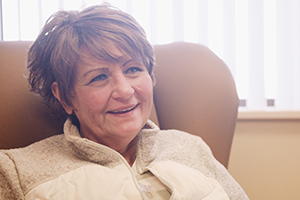Breast cancer is the second most commonly diagnosed cancer for women (after skin cancer). Although men can develop breast cancer, the vast majority of cases occur in women.
Some health care experts suggest that one in every eight women will develop breast cancer at some point in her life.
Breast cancer is the abnormal growth of breast cells. Certain risk factors may increase a woman's chances of developing breast cancer, however there are also ways to reduce the risk.
An abnormality in your genetic material causes breast cancer. What causes the genetic abnormality is not always specifically known. In most cases, researchers suspect the incident of genetic abnormalities increases as you age.
A breast cancer diagnosis means the genetic abnormalities have created a malignant tumor in your breast. In some cases, the abnormalities create a benign tumor, which is generally not dangerous to your health and is not cancer.
Common Forms
The most common forms of breast cancer occur in milk-producing cells (lobules) or the ducts, which drain milk to the nipple (ductal carcinoma). Another less common breast cancer begins in the fatty and fibrous connective tissues (lobular carcinoma).
The hormone estrogen plays a role in the development of certain types of breast cancer. Estrogen may cause these cancers to grow (see Treatment of Breast Cancer – Hormone Therapy).
With this type of cancer, cells have estrogen receptors, which cause them to grow. Doctors call these types of cells estrogen receptor positive.
About 20 percent of breast cancers carry too much of a growth-promoting protein called HER2. Doctors called this condition HER2-positive breast cancer and it is very aggressive with a higher risk of recurrence.
Doctors also define breast cancer by whether it has spread beyond breast tissue. Non-invasive breast cancer is confined to breast tissue, while invasive breast cancer has spread to other areas of the body.
Non-invasive breast cancer is often detected early and is often treated successfully. Non-invasive breast cancer can spread to other areas of the body, which is why early detection increases you chance of a positive outcome.
From the breast, cancer can spread to other parts of the body. Health care professionals refer to stages of cancer to identify how far the cancer has spread to other parts of the body.
Stages of breast cancer:
-
Stage 0 – Cancer cells have not spread beyond the breast ducts into normal breast cells.
-
Stage 1 – The cancer is confined to the breast tissue and is 2 centimeters or less in size.
-
Stage 2 – The tumor is larger than 2 centimeters or it has spread to the lymph nodes under the arm.
-
Stage 3 – The tumor has spread to the skin, chest wall or nearby lymph nodes or it is 5 centimeters or larger.
-
Stage 4 – The cancer has spread (metastasized) to the bones, lungs or lymph nodes far from the original site.
For more information on the
stages of cancer.
It is important to determine what stage the cancer is in so your provider can use the most effective treatments. The earlier (lower stage number) your cancer is identified, the better the potential outcome.
Aggressive research has helped identify breast cancers and suggested the most effective treatments for each stage. New discoveries help breast cancer patients experience better outcomes.
Research combined with public education about reducing risk factors and encouraging early detection through self and clinical examinations, is providing hope and the promise of even better outcomes in the future.

 The healing power of hyperbaric medicine
The healing power of hyperbaric medicine